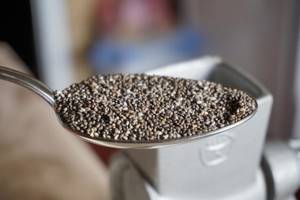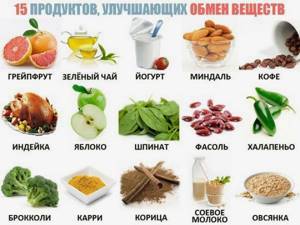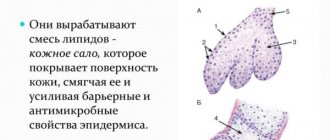What is hormonal imbalance?
This is a phenomenon caused by disruption of the body's endocrine and neuroregulatory systems. Often the imbalance is accompanied by problems in the reproductive system. If there is a failure, menstruation may be absent or irregular. Hormonal imbalance causes various diseases; obesity is just one of the problems and is often a side effect.
Is it possible to lose weight if you have a hormonal imbalance? Yes, if you go the right way. First, you need to eliminate the cause of the failure and normalize the background. This cannot be done without consultation with a gynecologist, endocrinologist, or drug treatment. Short-term disruptions caused by pregnancy or stress sometimes go away on their own, but excess weight remains. In this case, it is much easier to cope with it; it is only important to normalize your diet.
Causes of hormonal dysfunctions
Men also have problems, but much less frequently. More often they are caused by a lack of testosterone or an imbalance of insulin. But we are looking at female failures that have different origins.
Main reasons:
- pregnancy, lactation period;
- menopause period (after 40 years);
- adolescence;
- treatment with hormonal drugs;
- incorrect selection of oral contraception;
- stress, nervous breakdowns, mental illness.
Failures can also be caused by protracted illnesses and improper treatment. Very often obesity itself is to blame. Banal overeating, high-calorie dishes, excessive consumption of artificial and junk food inevitably leads to weight gain, and then provokes all sorts of imbalances. Losing weight during hormonal imbalance is much more difficult than before.
Causes of hormone disruption
Weight gain as a result of hormonal imbalances occurs for the following reasons:
- Primary or secondary amenorrhea. It is observed in women of childbearing age when menstruation is absent due to a lack of hormones. The reason for this is a violation of puberty or lack of ovulation.
- Pregnancy. All women undergo hormonal changes during this period (from the moment of conception to the time of delivery).
- Decreased ovarian function leads to oligomenorrhea. This is a condition in which menstruation lasts less than 3 days and manifests itself in the form of scanty discharge.
- Menopause. After 45-50 years, women begin to undergo age-related changes. At the same time, excess weight often appears due to hormones, or more precisely as a result of a decrease in the activity of production of the sex glands.
- Hyperandrogenism. Occurs due to an increase in the productivity of male sex hormones in a woman’s body. Clinically manifested by male pattern hair growth, muscle mass growth, alopecia (baldness), menstrual irregularities, increased blood insulin, and weight gain.
Provoking factors of hormonal disorders are:
- constant smoking or drinking alcohol;
- frequent psycho-emotional overload;
- diseases of the internal genital organs;
- diabetes;
- hereditary predisposition;
- hypofunction of the thyroid gland;
- physical overload or physical inactivity;
- abuse of fatty, spicy, salty foods, fast foods;
- chronic fatigue, lack of sleep;
- lack of vitamins, microelements;
- taking hormonal medications without specialist supervision;
- viral and infectious diseases.
Hormonal obesity
With hormonal imbalance, various popular methods of losing weight have extremely low effectiveness. Neither diets, nor sports, nor hunger strikes give the desired result. On the contrary, they can make the situation worse. Hormonal obesity is characterized by non-standard localization of fat. They also indirectly indicate the origin of the problem.
Main types of hormonal imbalances:
- prolactinemia. This species is characterized by fat folds on the back, front of the abdomen, chest and décolleté. Possible swelling, increased appetite, pain in the mammary glands, infertility, lack of menstruation. These symptoms of high prolactin levels
- hyperinsulism. This failure is caused by improper production of the well-known pancreatic hormone - insulin. This species is characterized by severe hunger, the formation of fat on the abdomen, folds also form on the back in the bra area;
- hypothyroidism It is also characterized by deposits around the waist, abdominal growth, folds on the back, but is caused by dysfunction of the thyroid gland, how to lose weight with hormonal imbalance of this type can be read below;
- insufficient estrogen production. This type of malfunction is characterized by fat deposits on the hips and buttocks. There is often a close relationship with other female hormones. Other symptoms of this type of failure are: irritability, fatigue, lack of libido, impaired reproductive functions.
Often, as a result of a malfunction, metabolism is disrupted and metabolism slows down. You won’t be able to cope on your own; you need to work with a specialist. Such violations cannot be eliminated with folk remedies. The fight against obesity is carried out simultaneously or after the end of treatment. Regardless of the problem or therapy prescribed, only a special hormonal diet will help you lose weight.
Symptoms and signs of hormonal imbalance
Signs of hormonal changes can be easily noticed on your own by paying attention to the following:
- disturbance of the menstrual cycle in the form of changes in their duration, the appearance of heavy discharge and non-cyclical bleeding;
- increased growth of vegetation on the body;
- loss of sexual interest;
- a small amount of white fluid may be released from the mammary glands;
- hair loss occurs.
When examining such patients, a doctor can identify changes in the condition of internal organs and their functioning. So, often in case of hormonal imbalances, a cyst of the corpus luteum or ovaries, fibroids, changes in the condition of the endometrium, and disturbances in the processes of follicle maturation are detected.
How to lose weight if hormonal levels and metabolism are disrupted?
It is important to understand that treating a malfunction is not the same as losing weight. To remove accumulated fat. It takes effort. Many people with severe obesity resort to surgery. It's not always liposuction. Often the cause of excess weight is a distended stomach; now doctors are successfully solving this problem. But not all people are ready for such radical methods; a special diet is often used for hormonal imbalance.
What goals does the system pursue:
- smooth and safe weight loss;
- improved health;
- acceleration of metabolism;
- cleansing the body of medications used in therapy.
The emphasis is on smart and slow weight loss. Safe weight loss does not exceed 5 kg per month. If a person is initially obese, has 3 or 4 degrees of obesity, then the first weeks the plummets will be much greater. This is due to the removal of excess fluid. Along with the kilograms, swelling will go away and volumes will melt.
Classic diet for weight loss in case of hormonal imbalance in women
During a failure, weight loss is discussed with a doctor, he will give basic recommendations. If the treatment has passed, the condition has returned to normal, or the person is on the way to this, then you can already start a diet. It is based on proper nutrition, it definitely won’t do any harm, it suits 90% of people.
How to lose weight after hormonal imbalance:
- reduce daily calories. If you consume more than your body burns, you won’t be able to lose weight; no diet will help;
- adjust portion sizes. No matter how a person justifies his obesity by problems with hormonal levels, the reason is often associated with overeating. This is due to a constant feeling of hunger. The size of the stomach increases at least 5 times, it is important to reduce it. The easiest way is to keep the serving size to no more than 250 ml;
- exclude sugar. This is especially important for people over 40 years of age. Sugar not only has a high calorie content, but also causes appetite, provokes overeating, and interferes with the breakdown of fats and the diet in general. If you have hormonal imbalances, using sugar substitutes is not the solution. They negatively affect the pancreas and insulin production, which aggravates the situation;
- reduce salt. There is no need to exclude it, but it is important to limit it as much as possible; for women, 3 to 5 g per day is enough, while the normal amount for an adult normally reaches 12 g;
- drink water. Many people know that liquid is more important than food when losing weight. In addition, it helps eliminate the feeling of hunger, prevents overeating, helps break down fats, and cleanse the body.
Before losing weight due to hormonal imbalance, it is important to take a general blood test to make sure there is no iron deficiency anemia or inflammatory processes in the body.

What foods should women not eat if they have hormonal imbalance?
While on a diet, you should immediately give up any ready-made meals or foods fried in oil. It is advisable to give preference to stewed, steamed, baked dishes. Occasionally, diet dishes can be cooked on the grill. All purchased sauces and mayonnaise are prohibited.
What foods are not allowed during the diet:
- coffee, strong tea;
- alcohol, including dry wine;
- potato;
- lard, other animal fats;
- condensed milk, confectionery, juices;
- canned fish, meat;
- sausages, semi-finished products, smoked products;
- fatty dairy products;
- baked goods made from wheat flour.
Important! If hormonal imbalance is caused by excess testosterone, then eggs, fish, and seafood are excluded from the diet.
What foods should you eat?
In case of hormonal imbalance, it is important to include in the diet foods rich in selenium, iodine, and zinc. These are seaweed, broccoli, lentils and beans, seafood. During the diet, you can take medications containing a complex of these substances.
What else should be present in the hormonal diet:
- healthy fats. The main sources are unrefined oils, avocados, nuts, and different types. There is no need to rely only on peanuts or hazelnuts, it is better to consume 30 g of the mixture daily, you can add pumpkin seeds, sunflower seeds, and sesame seeds to it;
- lean types of meat and poultry. We choose pieces without visible fat, it is prohibited on the diet. You can eat bone broths and dishes based on them (jelly, aspic);
- red and white fish, seafood. They should be present in the diet menu more often than red meat or poultry;
- vegetables. All types, colors, you can even have potatoes, but baked, it’s better to cook with the peel. Among vegetables during the diet, special emphasis is placed on zucchini, broccoli and cauliflower, cucumbers, celery, and greens;
- cereals are limited. You don’t need to consume it every day, but you can pamper yourself in the morning with a small portion of porridge made from brown rice, buckwheat, or oatmeal, which needs to be boiled;
- eggs and dairy products, low-fat cheese. You can safely introduce diets into your diet if you have good lactose tolerance. Eat cottage cheese at least 3 times a week. You should not choose a low fat content; a product from 4 to 9% is more suitable;
- green, mint, ginger tea. These drinks do not affect hormonal levels, but are useful for losing weight.
As for fruits, you can sometimes introduce not very sweet types into your diet, like berries. In general, this is a dangerous category of products, since even apples contain a lot of hidden sugars. They are also found in all purchased and freshly squeezed juices, so they are prohibited. As for fruits, it is better to give preference to citrus fruits, fresh pineapple, green apple, and quince.
For hormonal obesity, it is useful to consume modern superfoods: chia seeds, quinoa, spirulina, amaranth, flaxseeds.

Diet for hormonal imbalance in women (menu example)
Calorie content in each case is calculated individually. Since the goal of the diet is to lose weight slowly and safely without stressing the hormonal system, it is enough to make a deficit of 20 or 25% of the total daily intake. With this approach, the average weight loss per month should be from 3 to 5 kg.
Here is an example menu for a hormonal low-calorie diet. A person can consume his meals from recommended products. It is only important to cook them correctly, do not fry them in refined fats, salt them moderately, exclude fatty dressings and store-bought sauces.
| Monday | Tuesday | Wednesday | Thursday | Friday | Saturday | Sunday | |
| Breakfast | Buckwheat porridge with milk, green tea | Seafood omelette, rosehip broth | Boiled wild rice, half a grapefruit | Cottage cheese casserole with raisins, green tea | Scrambled eggs with tomato, green tea with lemon | Oatmeal, 30 g nuts, 1 apple, tea | 2 eggs, boiled carrot salad, ginger tea with lemon |
| Dinner | Creamy broccoli soup, 1 slice of rye bread | Any fish soup with vegetables, 2 crackers | Stewed potatoes with beef | Cabbage soup in meat broth with beans | Chicken soup with vegetables, slice of bread | Fish soup with millet, crouton | Tomato soup with lentils, a slice of black bread |
| Afternoon snack | 30 g nuts, 150 g cottage cheese | 1 glass of kefir, 20 g of bran | 150 g cottage cheese, 1 orange | 1 cup white yogurt, 20 g bran | 30 g nuts, 200 g steamed pumpkin | 1 cup ryazhenka, 20 g bran | 30 g nuts, boiled beets |
| Dinner | Stewed vegetable stew, fresh cucumber, compote | Chinese cabbage salad with avocado | Cabbage salad, a couple of eggs (omelet or boiled) | Baked fish, tomato and avocado salad | Beans with vegetables, greens | A piece of chicken, a large bunch of greens | Zucchini baked with low-fat cheese |
When to get tested
With hormonal obesity, women experience a number of symptoms, the presence of which should be a reason to visit an endocrinologist.
It is recommended to undergo the necessary tests when weight gain is accompanied by:
- excessive appetite;
- increased sweating;
- puffiness of the face, upper/lower limbs;
- tearfulness;
- irritability;
- disruptions of the menstrual cycle;
- nipple discharge;
- severe fatigue.
To identify the cause, the patient is prescribed a general and biochemical blood test, a hormone test, as well as examination using ultrasound, CT and MRI. If necessary, the patient should be examined by a gynecologist, nutritionist or neurologist.
How to lose weight in case of hormonal imbalance in women after 40 years?
Many people have heard that menopause makes you look younger. This is true. In 30% of women, menopause occurs earlier, and the first hormonal changes can appear after 40 years, when 20 years ago the average age was from 49 to 53 years. The restructuring of the body is characterized by a sharp weight gain. Even thin women's bellies begin to actively grow. Moreover, it is not the fat fold below the waist that increases. The entire front part is rounded starting from the chest. Outwardly, it looks like pregnancy.
In general, the hormonal diet for weight loss after 40 years is no different from the one presented above. But it is important to understand that metabolism slows down with age. If a woman at 30 years old is enough to have a calorie deficit of 20 or 25%, then after 40 years it should be at least 30%.
What else to pay attention to when losing weight at this age:
- presence of fiber. Every day you need to eat at least 400 g of raw vegetables, sometimes diluted with fruits. You can additionally consume bran;
- presence of healthy fats. They are described above, the ideal source at this age is avocado, vegetable oils are allowed, salmon is sometimes allowed;
- minimum meat. After 40 years, it is wiser to give up red meats in favor of fish and seafood. Occasionally you can eat chicken, quail, turkey;
- a minimum of sweets and fruits. Carbohydrates lead to weight gain, they are excluded.
In adulthood, in addition to diet, it is important to pay attention to activity. It is not necessary to play sports; you can take long walks in the fresh air. This is exactly the moment when movement can get rid of the problem.

How to lose weight during hormonal imbalance in women (metabolic diet)
In addition to the classic diet, there is also a medical or metabolic diet. The point is to consume certain foods in phases. There are only three stages. The duration of each is selected individually. Each product has its own score from 0 to 4. The lower the number, the better for a person with hormonal imbalance.
| Points | What foods can you eat? |
| 0 | Low-fat poultry and rabbit, eggs, dairy products up to 1% fat. You can have all greens and vegetables without starch, mushrooms. |
| 1 | Juice: tomato, carrot, cucumber or other vegetables (not fruits!). Regular and green beans, different types of berries. |
| 2 | Bran from any grain, beef and lamb, low-sugar fruit, oatmeal and wild rice. Dairy products up to 4% fat, nuts, and pickled cheese (goat) are also allowed. |
| 3 | Dark chocolate, fruit juices, millet, corn porridge, hard cheese. |
| 4 | Canned food, store-bought sauces, ice cream, confectionery and desserts, pork, potatoes and other products that remain on the grocery basket list. |
How to build a diet correctly?
Before losing weight due to hormonal imbalance, you need to carefully plan your diet in stages. The more excess weight, the longer the periods. You need to focus on your well-being and carefully monitor your weight. Once it stops falling or starts to rise, a person should cut back on foods with a high score.
| Phase number | The essence | Duration |
| First | Products consumed 0 points. | From 7 to 14 days |
| Second | In the morning the product is consumed 4 points, at lunch 2 and 3 points, then a snack from food 1 point. For dinner, only food worth 0 points. | The duration is unlimited, minimum 4 weeks. At this stage there is |
| Third | Food consumed in the morning is 4 points, lunch is 2 and 3, afternoon snack and dinner is 0 and 1 point. | Weight maintenance. The phase begins when the desired results are achieved and can last an unlimited number of months or years. |
A medical diet will help you lose weight not only during hormonal imbalance, but also for any other people. It has a scientifically based approach. You can view connections with other popular weight loss systems. For example, with the Mirimanova diet (minus 60), the first phase resembles Dr. Dukan’s system.
Important! Informational article. Before using any diet, you must consult a specialist!
Stable fat burning phase (allowed foods)
During this phase, nutrition should take into account the fact that some confectionery products (preferably chocolate, honey, dried fruits), pork, duck meat, potatoes and other high-calorie foods are allowed in small quantities. It is best to do this during breakfast.
High-calorie foods can be combined with foods that were allowed during the first two weeks of the diet.

Second breakfast and lunch may include dishes from the following ingredients:
- fresh juices;
- dairy products with 4% fat content, cheeses;
- vegetables;
- various cereals;
- protein products - chicken, beef or veal;
- nuts;

The afternoon snack should consist of products that were previously allowed. If desired, this meal can be supplemented with vegetable juices, berries, and bean dishes. For dinner, you can only eat foods that are included in the diet of the first phase of weight loss.











